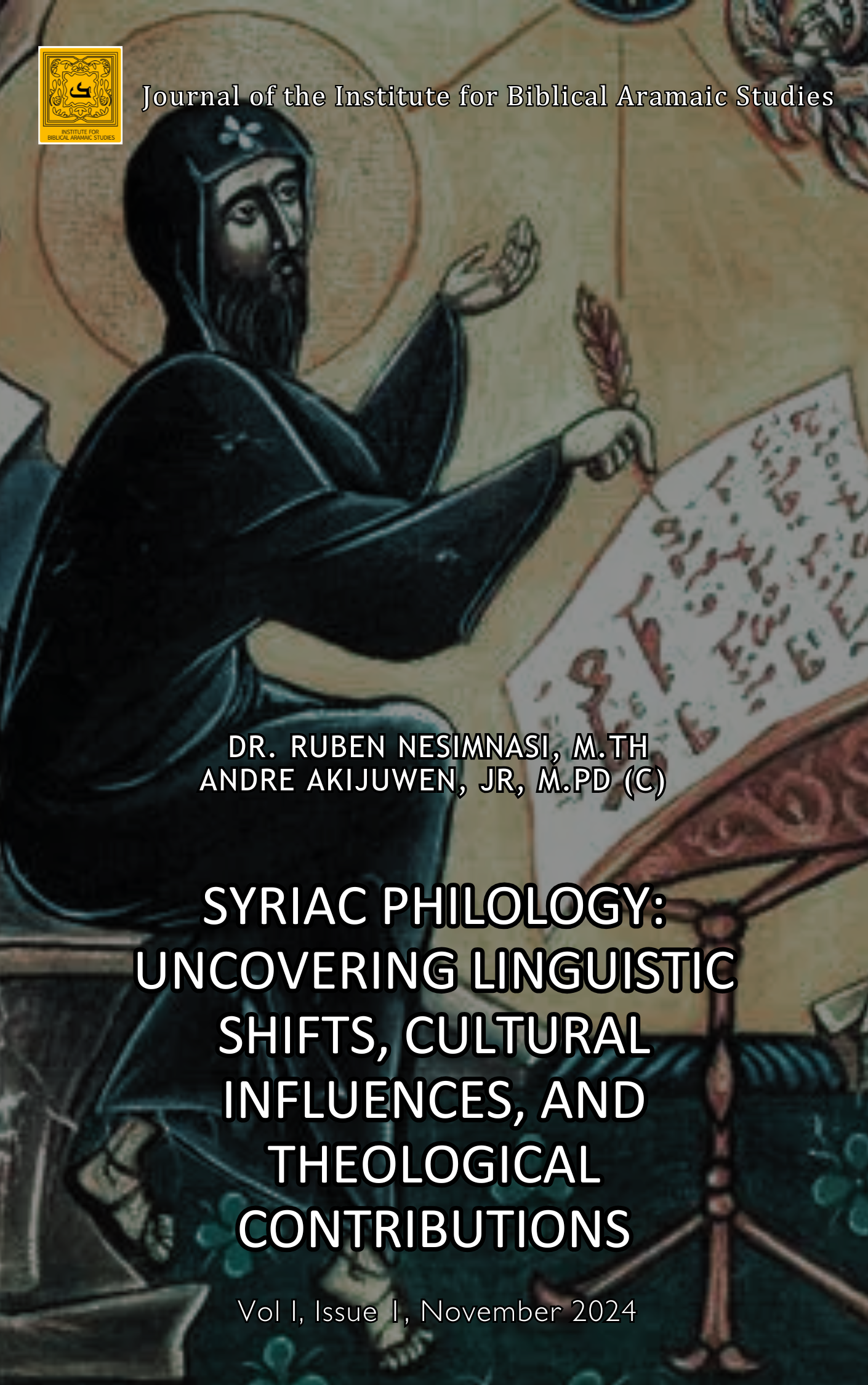Syriac philology: Uncovering linguistic shifts, cultural influences, and theological contributions
DOI:
https://doi.org/10.5281/024bce18Kata Kunci:
Syriac, Philology, Linguistic, Cultural Influences, Theological Contributions, Semitic, Early Christian, Manuscripts, Digitization, Theological StudiesAbstrak
This study examines the linguistic shifts, cultural effects, and theological contributions of Syriac, which had an important role in the development of early Christian views and cultural interactions in the Middle East region. Like one of the dialects of Aramaic, Syriac faced syntactic advances that reflected the external, pivotal effects of Greek and Arabic, which enriched the language's form and consumption in theological and customary conditions. Through philological analysis of Syriac manuscripts, this study identifies syntactic alternations and linguistic insights relevant to understanding the impact and acculturation of Syriac to the surrounding languages.
The results of this study show that the syntactic turn in Syriac not only played a role in the development of the language but also in the spread of Christian theological designs. This shift provides insight into the interplay of indigenous and religious routes that operated in the early Christian era. Not only that, the study illuminates the significance of digitization of Syriac documents in effect as a preservation and accessibility effort for future studies. In conclusion, this study contributes in important ways to Syriac philology, enriches the study of Semitic linguistics and dogma, and offers current perspectives that have the potential to impact the application of preservation and the development of the study of Semitic languages in academic and theological settings.
Unduhan

Unduhan
Diterbitkan
Terbitan
Bagian
Lisensi
Hak Cipta (c) 2024 Journal of the Institute for Biblical Aramaic Studies

Artikel ini berlisensi Creative Commons Attribution 4.0 International License.
License Terms
The work published in this journal is licensed under the Creative Commons Attribution 4.0 International License (CC BY 4.0). This means that:
-
Attribution: You are free to share, copy, and redistribute the material in any medium or format, and to adapt, remix, transform, and build upon the material for any purpose, even commercially, as long as you give appropriate credit to the original author(s), provide a link to the license, and indicate if changes were made.
-
Non-Exclusivity: The author retains the right to use the work in other publications, presentations, or personal use, provided proper attribution is given.
-
No Additional Restrictions: You may not apply legal terms or technological measures that legally restrict others from doing anything the license permits.
-
Licensor: The original author(s) of the work are the licensor(s), who grant you the rights outlined in this license.
-
License Link: For more information on the terms of this license, please visit Creative Commons.





